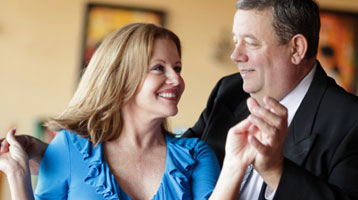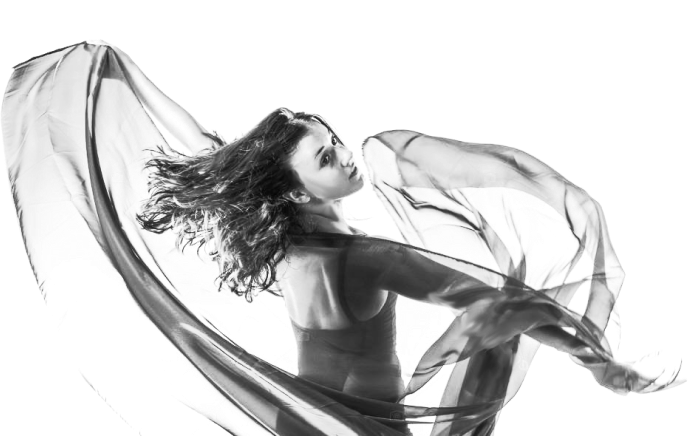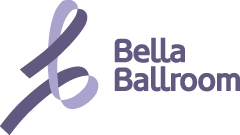
Social Dance
Polka
The Polka is a lively, up-beat dance that is still popular in many regions of the United States and throughout the world. The hops, skips and turns by dancers match the characteristically joyful Polka dance music.
History of the Polka
The Polka is a dance that was developed by the peasants of eastern Bohemia (now part of Czechoslovakia.) A popular story claims that a little Bohemian girl by the name of Anna Slezak invented the Polka for her amusement one Sunday in Labska Tynice in 1834. In the story, this little girl was skipping and dancing to the folk song “Strycek Nimra Koupil Sklma” (Uncle Nimra Brought a White Horse.) A local teacher named Joseph Neruba happened to come by and wrote down Anna’s steps, which she called “Madera” because of their quickness and liveliness. Soon other villagers learned Anna’s “dance” and by 1835 the Polka was introduced to the ballrooms of Prague.
The name “Polka” was coined because of the dances rapid shift from one foot to the other. “Pulka” is Czech for “half-step.” The Polka was the second closed position couples dance to be introduced to the world formally. The first was waltz. The polka began to rival the waltz in popularity around 1835.
In 1840, a dance teacher of Prague named Raab danced the Polka at the Odéan Theatre in Paris and made the dance a huge success. Parisian dance teachers took on the new dance and refined it for their studios and ballrooms. According to Cellarius, a famous French dance master of the mid-nineteenth century, this dance had the ability to snatch up even the non-dancer and make them want to acquire this dance that Cellarius viewed as indispensable. In 1843, Cellarius introduced it to the ballrooms of France and England. It travelled through Paris and gained massive popularity in the ballrooms and theaters throughout Europe and the Americas. Regional variations emerged as each region refined the dance to their own unique tastes. This later led to the inauguration of the present style of round dancing where dancers whirl around the ballroom at rapid speeds and use skips and hops to travel around the dance floor.
The popularity of this new dance caused some stir. Dance academies became swamped, so out of desperation hired ballet girls from the Paris opera as dancing partners to help teach the polka. This attracted many young men who were more interested in meeting the ballet girls than in dancing. Morals and manners in the dance pavilions fell apart and Polka dancing developed a bad name. Many of the parents of the dancers forbade their daughters from dancing with anyone but close friends of the family.
Of all the dances that originated in the nineteenth century, polka is one of the few that has survived. After the dance’s initial enthusiasm, it gradually weakened in popularity and reached a low point with the boom of ragtime and jazz and the introduction of the newer dances of the twentieth century. The Polka did get a boost, however, after the Second World War when Polish immigrants to the United States adopted the polka as their “national” dance. Lawrence Welk and other post-war bands also helped it re-gain some popularity in the U.S.
Polka Dance Today
Polka dancing is still enjoyed in the United States and abroad. It most commonly danced at festivals and celebrations, and has preserved through a variety of organizations. The International Polka Association is based in Chicago and works to preserve the cultural heritage of the music and to honor its musicians through a Polka Hall of Fame. The United States Polka Association is based in Cleveland, Ohio and the Polka America Corporation is a non-profit organization based in Ringle, Wisconsin.
Polka is the official state dance of Wisconsin and is very popular in Milwaukee, Wisconsin. The “Beer Barrel Polka” is played during the seventh inning stretch and halftime of the Milwaukee Brewers and Milwaukee Bucks games.
In 2009, the National Academy of Recording Arts and Sciences, which hosts and produces the Grammy Awards, announced that it was eliminating the polka category because it wanted to ensure the awards process remained representative of the current musical landscape. The Academy’s decision resulted from the declining number of popular albums in the genre.
While the popularity of recorded polka music in the United States has declined, live polka music has remained an integral part to polka dancing. From accordionist Lawrence Welk to the bands seen in the PBS special “Polka Time,” live music remains integral. The standard song has a 2/4 beat and is structured around four verses and a chorus, which is sung after every verse or after every two verses. A lot of polka music sings of loss, love, and even food. A typical band might include bass, trumpet, clarinet, saxophone and drums. Varieties of Polish bands might include a variety of instruments such as the accordion and the concertina. Czech and German polkas are considered the other two types of mainstream polka. Newer polka varieties such as Texas polka and punk polka blend other instruments and music genres with classical polka styles.
While polka’s popularity has increased and declined with the changing times, it’s still considered one of the most upbeat and lively partner dances in the social dance world.
Polka Music
- “Jolly Peter Polka” Die-Hard Polka Band
- “Barbara Polka” Lawrence Welk
- “The Bird Dance” The Emeralds
- “Helena Polka” Jimmy Dorsey
- “Orange Blossom Special” Osborne Brothers
- “Let’s Have A Party” Frank Yankovic
- “Safety Dance” Glee Cast
- “United State of Pop 2009” DJ Earworm
- “Save a Horse (Ride a Cowboy)” Big & Rich
- “I Gotta Feeling” Black Eyed Peas
- “A Little Less Conversation” Elvis Presley
- “Americano” Lady Gaga
- “Love Today” Mika
- “Only Girl” Rihanna
- “So What” Pink
- “In Heaven There is No Beer” Frank Yankovic
- “Blue Skirt Waltz” Jimmy Sturr
- “Orange Blossom Special” Osborne Brothers
- “The Bird Dance” The Emeralds
- “On Your Toes” The Babe Wagner Band
- “Hey, Hey Farmer Gray” Walt Solek
- “Krakowiak” Walt Solek
- “Ta-Ra-Ra-Boom-De-Ay” Walt Solek & his orchestra


